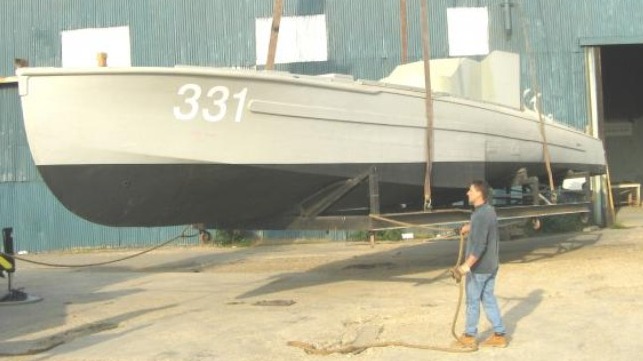Last Remaining UK Coastal Patrol Boat From WWII Finds New Home

The last remaining Royal Navy Coastal Patrol Boat from World War II - recently rescued with the assistance of charitable donations - has found a new home at the aptly-named Explosion Museum, a former naval armory at Pritty's Hard, Gosport.
Coastal Motor Boat CMB331, a Thornycroft 55-foot fast launch built at the start of World War Two, joined Motor Torpedo Boat MTB71 on a slow journey to their new home. The two boats took a 100-mile trailer trip from their storage site at the Fleet Air Arm Museum to Gosport, where they will be put on diplay for a special exhibition.
Immortalized as “Spitfires of the Seas” the boats, Coastal Motor Boat CMB331 and Motor Torpedo Boat MTB71, were often deployed in the dark, at incredibly high speeds as small but fast attack motor boats which carried torpedoes. It was a branch of the Royal Navy commonly manned by very young men, often reservist volunteers, in heavily-armed small craft designed to engage enemy naval forces at close range.
CMB331 is the last of a class designed by famed boatbuilder John Thornycroft during the First World War. The 55-foot version could carry two torpedoes and a full assortment of other arms while traveling in excess of 40 knots. CMB331 was commissioned in November of 1941 and served until 1945, when she was decomissioned for disposal.
In 2017, the boat's private owner in Oxfordshire decided to sell the boat. With just days to spare on a tight timeline, the National Museum of the Royal Navy successfully raised more than $8,000 dollars from the public in order to buy this rare piece of WWII history and move it to a safe location. Defense contractor BAE Systems provided a significant contribution for the project. The vessel was restored under the museum's supervision and placed in secure storage for preservation, and along with MTB71, it will now be put up on display.
"It’s an incredible opportunity to pay tribute to these boats and the crew who manned them by putting them at the very centre of our exhibition. Our visitors can see them up close and marvel at just how perilous their tactics were, stealthily travelling at high speed, often in the dark, and get a sense of the real risks these young men took," said Nick Hewitt, the museum's head of collections and research.
No comments:
Post a Comment